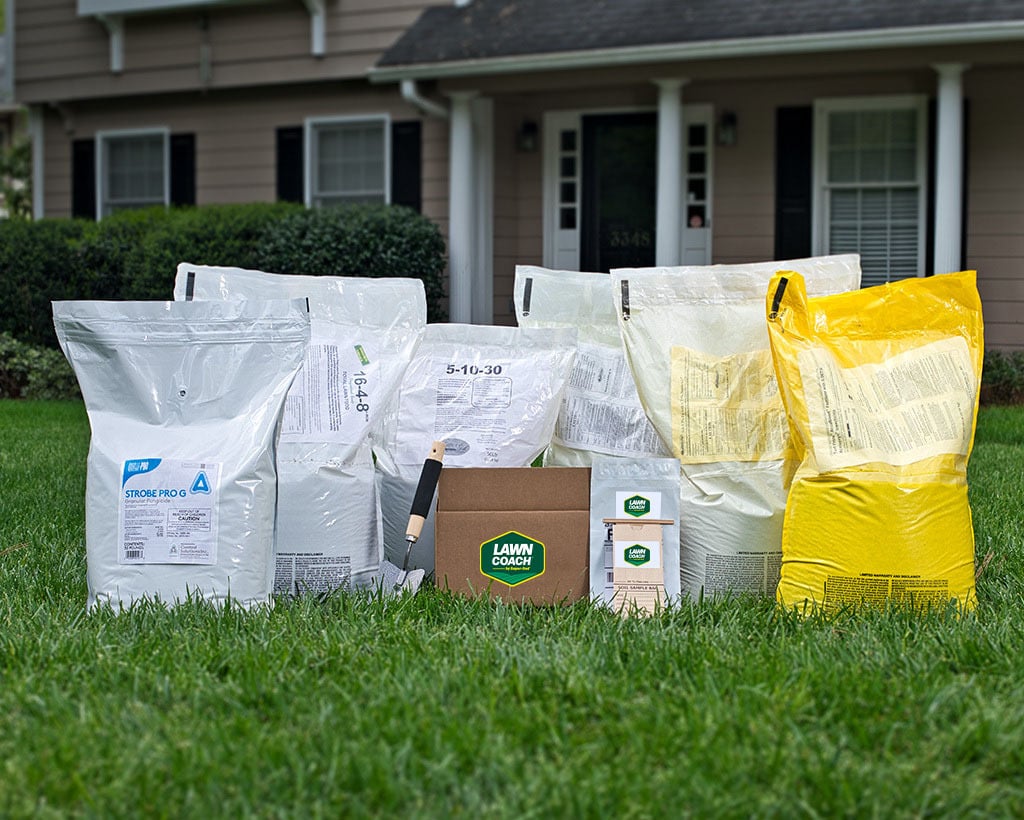

Turn your irrigation off, if you have TifTuf. "Tuf" is literally in the name!
You’ve chosen TifTuf Bermudagrass sod to create your drought-tolerant outdoor haven. Now, it’s time to follow these steps to get the most out of your new lawn and its lasting green color:
Bookmark this TifTuf Bermuda lawn care page, then subscribe to our Monthly Lawn Tips so we can email you lawn care tips and alerts.
Mowing TifTuf Bermuda
- Mow at 0.5-2 inch cutting height.
- Mow no more than 1/3 of the leaf off at one mowing. Use sharp mower blades and catch and remove clippings. Can be mowed with either reel or rotary mower.
- Mowing may be required on a 4-to-7-day interval.
| Mow when grass is this tall: | 0.75 to 2.5 inches |
| Set the cutting height to: | 0.5 to 2 inches |
Watering TifTuf Bermuda
While other Bermudas survive drought conditions by going dormant and greening up at the first exposure to moisture, TifTuf stays green without going dormant under drought stress.
In UGA tests, it uses 38% less water than Tifway while maintaining better turf quality.
Optimum water management, as with any grass, is dependent on soil, physical characteristics, and climate. While the watering rule-of-thumb for most lawns is to provide 1” of water per week (for Tall Fescue it's 2" during summer), in our southeastern climate TifTuf simply doesn’t need to be irrigated when grown in good soils once the roots are established. If you have TifTuf Bermuda, you can turn your irrigation off!
If you do water, don't waste water by over watering; avoid run-off and standing water for any period of time. To learn more here's insight on How and When to Water Your Lawn.
Become a master at watering your lawn when you read all our Watering Guides.
Fertilizing TifTuf Bermuda
- Apply between 2 and 4 pounds of nitrogen per 1000 square feet annually, during the growing season. Select a fertilizer that is labeled for use on Bermudagrass lawns. Do not apply fertilizer to wet turf to avoid burning. Too much fertility will result in a thatchy and unhealthy lawn.
- Fertilize according to the schedule below, based on feedback from soil test recommendations.
- Special note: Don’t fertilize your TifTuf Bermuda lawn with high nitrogen fertilizer in fall or winter.
- Read about How to Calculate Fertilizer Rates.
- Lime can safely be applied any time of year. Lime based on feedback from soil test recommendations.
Weed Control for TifTuf Bermuda
- Bermuda's vigorous growth can retard weed infestation, however the best weed control is preventive:
- Regular mowing
- Pre-emergent herbicide, recommended for use on Bermuda lawns on the label, is strongly recommended in the spring and fall
- Apply pre-emergent and post-emergent weed control products that are specifically labeled for Bermuda lawns. Do not apply pre-emergents 4 months prior to laying new sod.
- Apply pre-emergent weed control according to the table below. Read and follow all label directions.
- Apply post-emergent weed control to weeds you can see, as needed.
- For assistance with weed identification and pest control contact your nursery/garden center, landscaper, local Cooperative Extension Service agent, or browse our Weed of the Month section.
Look up Super-Sod's yellow spreader settings here.
Month |
Fertilizer & Weed Control (lbs/1000 sq.ft.) |
Timing |
| FEB | 0-0-7* + Iron w/ pre-emergent @ 6 lbs. | first week |
| APRIL | 16-4-8 + Iron w/ pre-emergent @ 6 lbs. | after last frost |
| MAY | 5-10-30 + Iron at 5 lbs. | middle of month |
| JUNE | 16-4-8 + Iron @ 6 lbs. | middle of month |
| JULY | 5-10-30 + Iron w/ Acelepryn (insecticide) @ 5 lbs. | middle of month |
| AUG | 16-4-8 + Iron @ 6 lbs. | middle of month |
| SEPT | 0-0-7* + Iron w/ pre-emergent @ 6 lbs. | middle of month |
*Low nitrogen
Additional TifTuf Bermuda Maintenance
Fungus Control: Bermudagrass lawns are susceptible to fungus during the cold, wet winter months. It is best to take preventative action and apply fungicide in autumn by following the schedule below.
Month |
Fungicide |
Timing |
| OCT | Professional fungicide | middle of month |
Thatch Removal: Periodically it may be necessary to remove accumulated thatch. This is best accomplished just before turf turns green (which is approximately late winter in the coastal plain and spring further north). Scalp or rake heavily and remove debris.
Pests may become a problem, especially if Bermuda is not growing healthily (too much or too little fertilizer or water, etc.).








